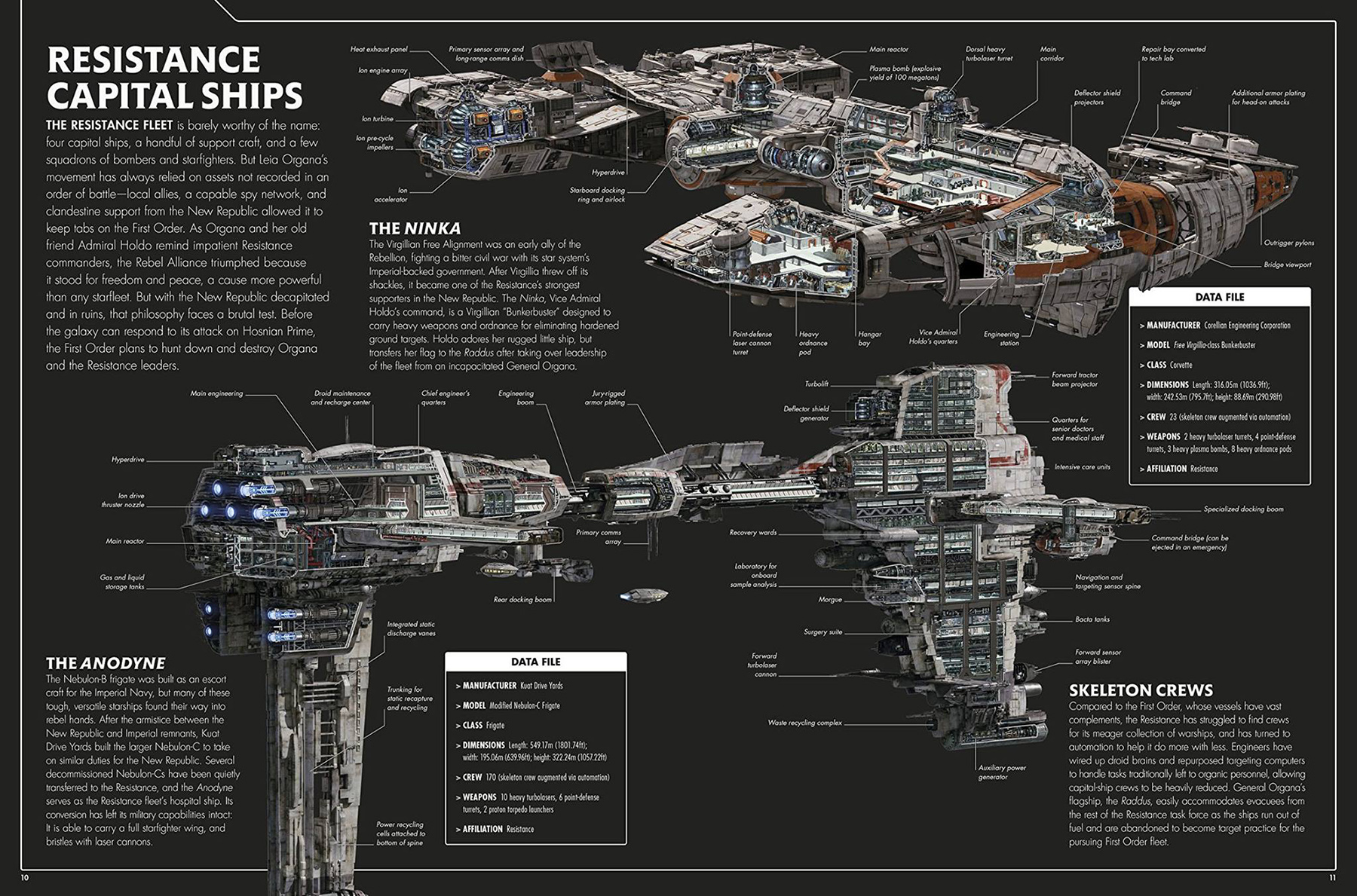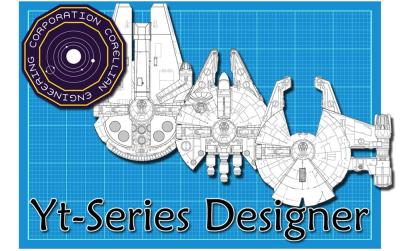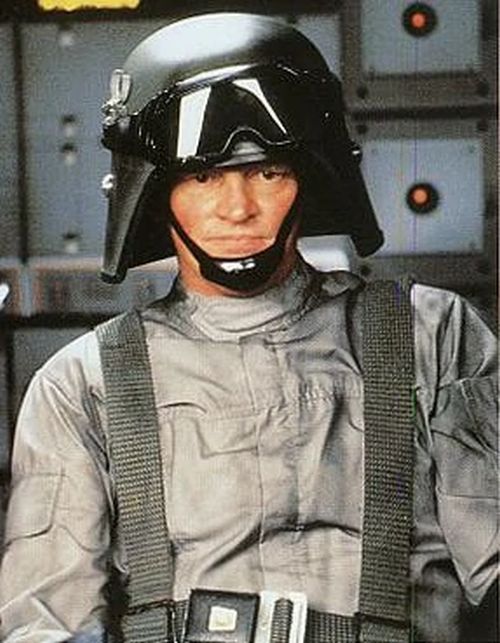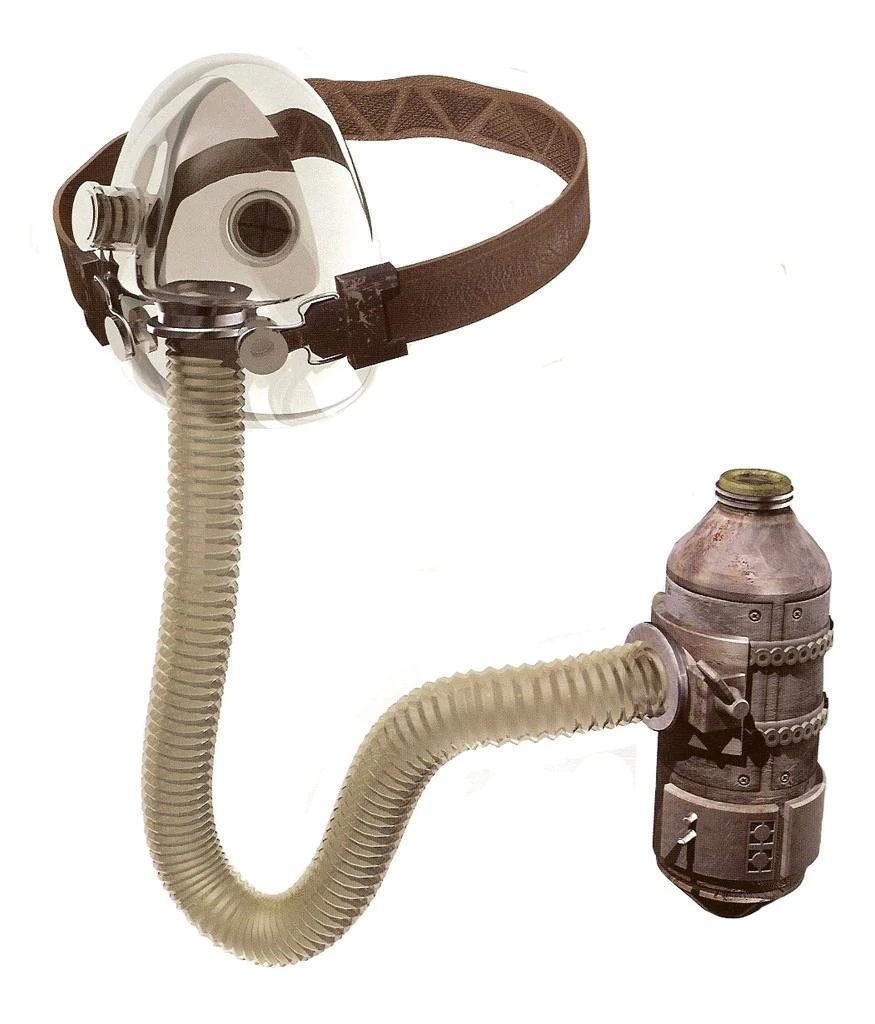 HELLSTORMER1'S STARSHIP CONVERSION GUIDE - MEDICAL SHIPS
What follows are optional rules and guidelines for converting starships to have their own medical facilities. While this conversion guide was intended for capital scale ships, it can easily be used with space transports, other large vehicles like walkers and speeders if they have enough cargo capacity, or even for converting ground-based facilities or space stations if enough information is given on them to do so.
The inspiration for this guide is the Anodyne, the Resistance medical frigate shown in Star Wars Episode VIII The Last Jedi, and by extension The Redemption, the Rebel Alliance medical frigate that came before it.
Lets say you like the idea of having your own medical ship. Maybe something like Redemption, the medical frigate of the Rebel Alliance converted from a Nebulon-B Escort Frigate. Or like the Anodyne? The Resistance's medical frigate, 30+ years in the future during their conflict against the First Order, converted from a Nebulon-C Frigate, and bigger in size. Or maybe you've got something else in mind? Perhaps a light freighter converted to be a space ambulance or mobile clinic? Perhaps something roughly the size of a starfighter that can pick up single patients, and fly really fast from one location to another while keeping them stable? Or something even crazier?
What follows is some guidelines for converting a starship into a medical ship, either as a specifically purposed medical vessel, or just add a few extra medical facilities to a more general purposed starship. This guide is meant for capital scale ships, but if a transport or some other applicable vehicle has enough room, there's no reason why it shouldn't be usable for them as well.
Before getting into the conversion guidelines and steps, something worth remembering. In Galaxy Guide 6 Tramp Freighters, the book states that cargo capacity can be converted into passenger space, at a rate of 10 metric tons per person. This is the basis for just about everything this conversion guide is going to use. Using that as a standard, it becomes the basis from which we make other assumptions and guesses as to how to make this conversion work.
1 person = 10 metric ton. This assumes the person has the bare minimum quarters to relax and sleep in on a space transport. Sometimes this may be separate rooms, but if you look at maps of the Millennium Falcon and other transports, often this means a single room with separate bunks. But that's ok, this actually works. In hospitals, often patients in recovery share rooms with two beds. Depending on the conditions, there could be four beds per room, or more. So using this ratio will work and it's pretty solid for what comes next.
With the crew/passenger and cargo ration, Tramp Freighters also states that converting 10 metric tons of cargo capacity into passenger space costs 400 credits per person. This is also good, as we now have a basis for cost and charges for doing medical conversions, as well as just about any other conversion requiring a change in cargo capacity.
- - - - - - - - - -
QUARTERS FOR DOCTORS AND MEDICAL STAFF
1 medical staff (bunks) = 10 metric tons, 400 credits
1 medical staff (separate) = 20 metric tons, 800 credits
1 doctor = 20 metric tons, 1,000 credits
These would be similar to regular quarters in most cases, a place where medical staff can rest and relax in between shifts running the medical facilities aboard the ship. If the medical ship is military based, the regular medical staff would have similar room as soldiers and other crew would, with each room having two or more bunks in them for individual occupants. Doctors would more than likely have their own individualized quarters for each person, in a similar fashion to military personnel where "rank has its privileges", though depending on the circumstances some doctors may make use of the same bunks that regular medical staff would use, grabbing rest and sleep whenever they have the time.
For regular medical staff, quarters will be the same as any other ship. For doctors, their quarters would have to not only make room for them, but their medical equipment that they need to perform their duties. Regular medical staff may require medical equipment as well, but this would be more generalized and kept in a storage area where all regular medical staff can access this equipment when needed before, during, or after their shift. Doctors quarters would be treated as individualized quarters with more room that standard crew quarters.
- - - - - - - - - -
MEDICAL TREATMENT AREA
1 patient (waiting room) = 2 metric tons, 20 credits
1 patient (spacious) = 5 metric tons, 50 credits
1 patient (luxury) = 10 metric tons, 200 credits
While some patients may require more room for treatment due to their injuries, illness or other factors, many others do not. This may effectively seem like a "waiting room" or "waiting line" as patients needing care for non-serious injuries patiently await the chance to see medical staff, are examined, receive treatment, then leave the medical facility. This area is not quarters, would have no furnishings for staying long-term like beds, and would not need to be very large under normal conditions, as patients are treated as quickly as possible, then allowed to leave in order to make room for other patients coming in. This area would not have room to lay down, but would have chairs for sitting, and enough room to bring in a stretcher or repulsor gurney if someone needed it. Examination rooms would be off to the side beyond the waiting room, and medical supplies and equipment for light treatment and care would be kept in a nearby storage area for treating non-serious injuries and illnesses. More extreme cases would need to be taken to other areas, such as an Intensive Care Ward, Surgical Suites, or a Bacta Tank Bay.
Under extreme conditions, just like in a normal hospital, this area can become overcrowded during times when patients receive injuries and need treatment all at once. During times like this, any and all available free space would be occupied as a Medical Treatment Area. Examples of areas that could be overtaken during times like this include galleys or mess halls, hangar bays, cargo holds, the sides of corridors running throughout the ship, or even docking booms such as those shown on the Anodyne of the Resistance navy. For the most part, as long as these areas and spaces do not interrupt the function and operation of the ship or vehicle, they should do just fine.
In the case of a medical capital ship, these kind of treatment areas would be relatively small. Especially if the ship has been converted over to medical use, such as medical frigates of the Rebel Alliance and Resistance, where these ships probably were not designed to have such areas in the first place. An example worth noting is the Anodyne, which may or may not have
The standard "waiting room" is effectively a room with chairs placed together. The "spacious" version is a larger room that gives the patients more room to not feel cramped in and claustrophobic, and usually has slightly better chairs or other furniture perhaps even some form of cheap media for entertainment like magazines/holomags, newspapers, or a television/holoscreen. The luxury version shares no expense, giving plenty of spacious room, but also adding comfortable reclining chairs and other forms of entertainment, such as individualized holoscreens per waiting seat.
- - - - - - - - - -
INTENSIVE CARE UNITS
1 patient = 20 metric tons, 2,000 credits (room = 800 credits/equipment = 1,200 credits)
Example: In Star Wars Episode VII The Force Awakens and Episode VIII The Last Jedi, Finn has been severely injured, left in a coma, and placed in a Flex-Poly Bacta Suit. When he is shown in the suit, Finn is in a room laying on a bed surrounded by equipement that serves many purposes, such as monitoring his life signs, brain waves and other biological functions, as well as monitoring the operations of the Flex-Poly Bacta Suit itself and how it affected Finn's body.
This scene is also reminiscent of areas in hospitals where patients have suffered severe injuries and require more medical attention than other patients die to the severity of the injury or illness. The severity of such ailments usually render such patients immobile, incapacitated, or otherwise unable to move or function under their own power, and could very well die if they do not receive treatment, often over a prolonged period of time.
Due to this, Intensive Care Units are often set up for prolonged care over the course of days, weeks, or even longer, unlike patients who come and go for treatment of less severe injuries. Such rooms often require the use of life support devices or many kinds in the form of automated air pumps to breathe for the patient, electrical pacemaker to keep their hurt pumping and defibrillator if their hurt ever stops, poly-flex bacta suits if the patient's injuries are not considered important enough for a full tank or if one is not available, among many other life-sustaining devices and equipment.
The cost is for the room required for the patient, as well as the various equipment that may be needed to treat their ailment. Much of this equipment will not be stored in the ICU but kept in storage in the ships cargo hold, specifically a section for medical supplies and equipment, and brought out when needed.
- - - - - - - - - -
SURGERY SUITES
1 patient (minimum) = 60+ metric tons, 12,400 credits (5 staff/1 patient = 2,400/equipment = 10,000)
1 patient (standard) = 100 metric tons, 24,000 credits (8 staff/1 patient/extra room = 4,000/equipment = 20,000)
1 patient (advanced) = 200 metric tons, 58,000 credits (8 staff/1 patient = 8,000/equipment = 50,000 credits)
-Difficulty -5 (reduced 1 level), +1D to Surgeon skill roll(s)
Where Intensive Care Units are areas where patients can recover from debilitating ailments and receive ongoing care that doesn't require skilled and immediate action, they are for the most part used after surgery would have been needed.
A Surgery Suite is an area where a surgeon and their staff can perform surgical operations on a patient needing immediate treatment for a number of ailments. The short explanation of these ailments is that the patient cannot recover, and could possibly even die, if this surgery is not performed on them. While surgery can be performed for less severe reasons, these Surgery Suites can be used at any time to perform surgery on a patient, be it invasive or not, having all the tools the surgeon and their staff will require, plenty of room for the staff to move around the patient and equipement as needed, while also being left undisturbed and able to focus on the surgery so as not to make mistakes and risk causing more harm to the patient.
The ratio given above (1 patient = 60 metric tons (minimum)) implies a Surgery Suite large enough for the patient, a surgeon, anesthesiologist, 2 scrub techs, and a circulating tech, and all the equipment required to perform most surgeries, not including unique circumstances or the need of uniquely specialized, rare, or otherwise nonstandard medical equipment. For more important surgeries requiring these or a larger staff, the Surgery Suite may need to be bigger. In the case of a military medical ship like Home One or Anodyne, these larger Surgery Suites would probably not be expected, needed, or otherwise installed on these ships, as the Rebel Alliance and Resistance have limited resources and simply may not be able to save a patient needing more extreme treatment while in the battlefields of space.
However, if a Surgery Suite is desired that has more advanced and specialized equipment to enhance the chance of success for surgical operations, including a whole suite of systems such as medical analytical computers, biosensors, bio-rhythmic manipulators, A.I. brain stabilizers, automated surgical assistant manipulators, specialized particle fabricators and fluidic alchemical converters for producing medicinal drugs within seconds....pretty much the works for performing magic in the Surgery Suite, the price for this is listed above. Such a Surgical Suite will reduce all Difficulties by one level, or -5, and grant the Surgeon +1D to their skill rolls during surgery.
Surgery Suite Staff
Operating room personnel are key to the outcome of any surgery. It takes a team of doctors, nurses and OR staff working together and performing their individual roles to ensure the best outcome for the patient.
If you are preparing for surgery, you may wonder who these key players are and what roles each of them will play in your care. It’s likely at least one of each of these medical professionals will be in the O.R. during your surgery:
-Surgeons = 10 metric tons
The surgeon is your primary doctor and considered the leader in the operating room. It is the responsibility of the surgeon to ensure the operation goes smoothly, with minimal complications. The surgeon directs all nurses and assistants in every step of the procedure while working closely with the anesthesiologist to manage the patient’s care and condition throughout the procedure. While some surgeries may require a team of surgeons, the standard surgical team is comprised of one surgeon and one resident surgeon.
-Anesthesiologists = 10 metric tons
The anesthesiologist or nurse anesthetist is responsible for managing the patient’s level of consciousness during the procedure. Along with your surgeon, you will meet your anesthesiologist/nurse anesthetist prior to surgery to discuss what sedative measures will be taken during your surgery. During this pre-op meeting, be sure to mention any allergies to medication you may have. Prior to surgery, you will be given anti-anxiety medication to relax you. Then the anesthesiologist/nurse anesthetist will induce sedation or apply local anesthetic, depending on the nature of the procedure. The anesthesiologist/nurse anesthetist is also responsible for monitoring and controlling the patient’s breathing during surgery.
-Scrub Tech = 10 metric tins each (2 minimum)
Every surgery requires a team of two to four surgical techs to be present in the operating room during the procedure. The “scrub” tech wears a sterilized gown and gloves and is in charge of all the instruments that will be used during the procedure. He or she anticipates what tools and instruments the surgeon will need and passes those to the surgeon as requested. The scrub tech must also keep the surgical field organized and keep track of every piece of gauze and every instrument used during the operation.
-Circulating Tech = 10 metric tons
This individual is not required to be scrubbed in and is able to move freely around the operating room to perform a variety of duties, including bringing the patient to the operating room, tying the surgical gowns of surgeons and other operating personnel, opening non-sterile outer wrappings of sterilized instruments and retrieving any additional supplies, including instruments and medication. This individual may also be responsible for any paperwork that must be completed by the operating room personnel.
-Nurses = 10 metric tons
Registered nurses may also perform the duties of the surgical technicians, acting as the scrub nurse or circulating nurse. During some procedures, a nurse acts as the first assistant to the surgeon.
-Medical Droids = half other staff members
In Star Wars, various medical droids exist that are very advanced in the medical field. As long as they are properly programmed and well maintained and do not malfunction during the surgery, they can perform the duties of any member of a Surgery Suite's staff, even that of the surgeon. Some surgeons may even prefer droids on their surgery staff due to droids being more dependable than people, depending on the circumstances. For instance, lets say a surgery requires hours to perform, if not the better part of a day, perhaps longer. A living person would give in to exhaustion at some point and be more prone to making a mistake. But a droid, while limited in their ability to improvise (depending on how extensively they are programmed, or how long they've been allowed to develop a personality without being memory wiped), is never in danger of falling prone to exhaustion and the many mistakes that can occur in the Surgery Suite while in such a condition.
The only hindrance to a surgery suite fully crewed by droids is their price, which can be quite restrictive if funds are limited.
- - - - - - - - - -
BACTA TANKS AND BACTA TANK BAYS
1 bacta tank = 20+ metric tons, 3,000+ credits
x1 refill = 5 metric tons, 1,000 credits,
x5 refills = 25 metric tons, 4,000 credits
x10 refills = 50 metric tons, 8,000 credits
x20 = 100 metric tons, 16,000 credits
Bacta recycler system = 10 metric tons, 10,000 credits
While every group would love to get their hands on a bacta tank as it is probably the best piece of medical equipment to have if and when severe injuries can occur, what we have here are guidelines for converting space in a ship or other area into a Bacta Tank Bay, or Bacta Bay for short. While the Star Wars Sourcebook lists a bacta tank as costing 3,000 credits, it does not list how much cargo space is required to install one on a ship, nor does it mention refills for the liquid bacta to fill the tank. Until such a time as I find more rules for this, I have made my own and presented them here.
A bacta tank itself will take up roughly the same space as 1 crew quarters (10 metric tons). However, the tank also has several external components that take up more room, making it require double this (2 crew quarters, 20 metric tons). This still does not include the bacta liquid refills for the tanks (assume the bacta tank itself comes with 1 full load upon purchase). If several bacta tanks are being placed in the same area to make a bacta tank bay, then the bacta refills for those tanks will mostly likely be stored in the bay or nearby for eassy access. You need room for the tanks and the refills to fully deck out a bacta bay.
The tank itself does not contain just the liquid. It also has a breathing apparatus for the patient placed inside the tank, air tanks to contain whatever the patient species breathes, and computers to monitor the patients vital signs, the breathing apparatus, bacta status, and to make adjustments to the breather, the bacta, or other relevant conditions such as tank temperature and liquid density. This is why the tank itself would be expensive, eve without the bacta
GMs and players may disagree on if bacta tanks should also require refills of bacta liquid. Some may say the bacta tank shouldn't be an ongoing investment after the initial purchase. Others might take a more realistic approach and claim that bacta would expire over time or from use, just like most other things. It could be argued either way. For the realistic approach of an ongoing investment, prices are presented above for the tank, various numbered refills (even discounts for bulk purchasing), and even a bacta recycler system to reuse bacta loads and make them last longer. If GMs/players would rather make the tank a one-time purchase, just assume something like the bacta recycler system is already built into the tank and its external components, and there you go. You'll never have to worry about bacta unless something tips the tank over or damages it.
- - - - - - - - - -
RECOVERY WARDS
1 patient (cramped) = 5 metric tons, 100 credits
1 patient (standard) = 10 metric tons, 200 credits
1 patient (luxury) = 20 metric tons, 500 credits
When patients have been through treatment for injuries and need time to recover until they can get back on their feet, such as after surgery, radiation treatment, setting broken bones, treating a debilitating illness, or any number of other ailments, these patients would spend time in the Recovery Ward.
The difference between the Recovery Ward and the Intensive Care Unit is that the Recovery Ward is for recovery and healing after treatment has been performed and the patient is expected to leave after they have healed enough, while the ICU is for ongoing treatment to patients suffering ongoing debilitating effects and not expected to leave anytime soon. Also, the Recovery Ward usually will not be filled and cluttered with the various life support devices ICUs will usually have.
Recovery Wards are often as seen in real life, a room with space for 2 to 4 patients to share at a time, with a single bathroom shared between them. The quality of these wards depends on how much is invested in them. Cramped Recovery Wards pack many people in a tight space, more than the standard 2-to-4, and the patients may feel claustrophobic and more than likely will not be comfortable enough to properly recover and heal. Aboard some starships or low-grade facilities, these Recovery areas can be common, and may even have more, many more, than 4 patients trying to recover here. These conditions would be common in cities or on planets that count as "third world nations" with poor living conditions, and starships can have such conditions as well. They're really not any better than cheap, cramped waiting rooms. Standard can comfortably handle 2 to 4 patients at a time, who can relax and rest, and even place partisans up to help them ignore the other patients for their own personal comfort to help the healing process by giving them piece of mind. Luxurious recovery areas give the patient much more space to rest in, and they are alone and do not have to worry about being bothered in any way by other patients.
- - - - - - - - - -
MEDICAL LABS
1 lab technician (substandard) = 20 metric tons, 4,000 credits
-Lab for 4 technicians = 80 metric tons, 1,600 credits
(+1 Difficulty Level/+5)
1 lab technician (standard) = 30 metric tons, 10,000 credits
-Lab for 4 technicians = 120 metric tons, 40,000 credits
1 lab technician (advanced) = 40 metric tons, 100,000 credits
-Lab for 4 technicians = 160 metric tons, 400,000 credits
(-1 Difficulty Level/-5, +1D to skill rolls)
Medical labs are laboratories specifically purposed for scientific purposes of a medical nature. This can include diagnosing ailments, analyzing various medical data or biological samples from patients or other species or plants, etc, other potential sources for diseases and ailments. All in all, medical labs are meant for gathering, processing, and analyzing data for the purpose of treating patients, wherever that data may come from (blood work, just one example of many innumerable others), and doing so in a myriad of ways too numerous to list here, though admittedly they can be used for other creative and improvised purposes as well. Medical labs often do have what could be considered "standard" sets of equipment and conditions meant to allow the lab staff to perform their duties unhindered by poor conditions or lack of the right equipment. "Substandard" labs could have poorer conditions that annoy or frustrate the staff working in them, or so not possess the proper equipment to perform their jobs. Substandard labs could easily make related skill rolls +1 Difficulty level/+5 if the GM wishes. "Advanced" labs not only have good conditions, but have extraordinary conditions for the comfort of the technicians working in them, as well as advanced, specialized and unique equipment and devices that can give the lab technicians -1 Difficulty level/-5 against their skill rolls in their favor, and +1D to their skills when they need to make these skill rolls.
For an idea of how advanced this equipment can be, read Surgical Suite above.
- - - - - - - - - -
QUARANTINE FACILITIES
1 patient (soft-seal) = 20 metric tons, 1,000 credits
-Easy Security rol to bypass, Moderate Strength roll to force open
1 patient (hard-seal) = 20 metric tons, 5,000 credits
-Difficult Security roll to bypass, Very Difficult Strength roll to force open
1 patient (hard-seal & booby-trap) = 20 metric tons, 10,000 credits
-Very Difficult Security roll to bypass, 4D damage on failed roll or 1 on Wild Die, Heroic Strength roll to force open
Sometimes a patient catches a bug. And sometimes, that bug doesn't want to stop with one poor victim. It needs more. It wants to spread. Spread its contagion, becoming a pestilence, and plague among the living, killing hundreds, thousands, millions, or more, if left untreated. But thankfully, whether medical staff can treat this bug or not, the infected individual can be placed within a quarantine area to limit or negate the infection.
What is shown are quarantine facilities of varying degrees of safety and security. While a patient could be quarantined while laying in an ICU bed, this required little more than clear plastic curtains and a separate oxygen supply. Such quarantine is already supplied in the cost of the Intensive Care Unit above. What is offered here is for when a more secure quarantine is needed, when the afflicted patient may not want to stay in one place and might want to try to escape....or if the medical staff just want to be sure and take no chances.
The "sof-tseal" quarantine is little more than setting up a partisan with what amounts to prefab solid or semi-solid materials, adding an environmental seal to the walls, door, structure, perhaps adding some reinforcement to the structure for stability, adding an external oxygen supply, and sealing the unfortunate plaguebearing poxwalker inside, and hoping they don't find a way out. This structure can be escaped from with enough time and effort, more or less depending on the physique of the individual.
The "hard-seal" involves erecting a structure or partisan that is much more durable, with walls and access point made of metals, plasteel, or even durasteel, and unless the afflicted patient is a buff hulk, this quarantine partisan may hold the patient inside with the access point, an environmentally sealable hatch of some kind, being the only way in or out.
The "hard-seal & booby-trap" combines an upgraded version of the hard-seal with a booby-trap to deter patients from trying to exit the quarantine partisan until allowed to do so by proper medical staff. The booby-trap can take whatever form the GM/players desire, be it an stunning electrical charge, a hidden flamethrower, a jury-rigged blaster, a retractable impaling spike, a weighted boxing glove, or something else pulled from the SAW movies that might scare fearful patients into submission to the will of medical staff who know better, at least until a cure can be found.
- - - - - - - - - -
MORGUE
1 patient (examination and autopsy room) = 30 metric tons, 3,000 credits
1 ex-patient storage = 5 metric tons, 200 credits
While 200 credits may seem too expensive to spare on the dead, this is for the refrigeration equipment used to keep the bodies of the deceased preserved as long as possible. Especially while in transit aboard a starship until the ship's crew can send the body pf the deceased back to their loving family for a proper burial (or until the captain or chief medical officer gets tired of the stench or the rising body count, and gives the order to grant the poor souls a "burial at sea" among the stars, or a dip into the ship's waste recycling complex).
All jokes aside, the Morgue is still an important part of any proper medical facility's function and operation, as the dead need to be cared for too. While Morgue slabs require little space to hold a single body, they still need room for the refrigeration systems used to preserve the body for eventual burial, or further examination in the future if new discoveries are made about the body's condition.
Aside from the sliding slabs and hatches to store the corpses of the deceased, the Morgue will also have a room with tools and equipment, and a table for laying bodies upon it, all for performing examinations and autopsies on the deceased, and to prepare the bodies of the dead if they will soon be given a burial, be it on the surface of a distant world, or into the sea of stars.
- - - - - - - - - -
DROID BAY (MEDICAL DROIDS, RECHARGE STATIONS, AND REPAIR FACILITIES)
1 droid (charge station) = 5 metric tons, 200 credits
1 droid (repair bay) = 10 metric tons,
Many medical facilities and ships have a wide array of medical droid to aid the medical staff in their duties with treating patients. While the cost of the droids depends on the individual droids that GMs/players wish to purchase (see Cynabar's Fantastic Technologies for details on droids), the Droid Bay's recharge stations and repair facilities are simple and straightforward enough.
There should be recharge stations equaling the number of droids in the medical facility or aboard the medical ship, though some crews and staff might try to be cost-effective and go for fewer charge stations. These stations are also where the medical droids would be stored when not on duty or in use. This is why no cheap or advanced versions are listed because a charge station is a charge station, and if you don't have enough of them, it affects the medical droid staff and their ability to perform their duties.
Unless stated otherwise, autonomous mobile medical droids require (not plugged into some stationary duty position) require 10 minutes for every hour they remain active. They can remain active for 12 hours per cycle. Low power mode can stretch their cycle to x4 (48 hours) until they become active.
NOTE: This is only here due to seeing the Anodyne's Incredible Cross-Section, where the ship has a "Droid Maintenance And Recharge Station" in the upper rear of the ship. I wanted to work this into these rules, though this could be applied to any type of droids.
- - - - - - - - - -
MEDICAL STORAGE (A.K.A. MEDICAL CONSUMABLES)
Medical Storage, in short, is the storage for medical supplies and equipment for the established medical facilities to perform medical operations for a specific amount of time. It works just like Consumables in staship stats, only in this case instead of how long a crew can go before they go hungry or thirsty, or suffocate from no air, it's how long the ship can continue to offer medical services as long as it has the supplies to do so. All of the rules/guidelines listed above can decide how much capacity a medical ship or facility can handle, and Medical Storage is how long it can handle that capacity.
First, add up the credits cost and cargo capacity/metric tons of the Medical Treatment Area(s), Intensive Care Unit(s), Surgery Suite(s), and Medical Lab(s). All of these upon initial purchase can operate for 3 months of regular use. Unlike Consumables which are used fairly consistently, Medical Consumables and their use depends on how much they are needed at any given time. Regular use sees them stretch out for 3 months, while strained use has them last 1 months or less, and seldom use has them last up to 6 months. Due to ships like Home One and Anodyne being medical frigates, expected to handle large numbers of injured troops and other personnel at any given time when they go into combat, or support their allies after the combat is over. medical warships should hope for regular use, but expect strained during wartime, and difficulty resupplying at regular intervals.
Next, divide these numbers by 10. Paying this 1/10th price in credits converts this much of a ship's Cargo Capacity to carry 3 more months of Medical Supplies. However, this does not fill the storage space with the supplies. This must be filled by paying the 1/10th price again. One payment for converting cargo space to hold the supplies, another to fill the space.
GMs may wish to forgo paying for the conversion of Cargo capacity AND paying for supplies, or perhaps seeks an easier method all together that requires less or no more spending. In this case, simply drop the conversion portion and pay for Medical Storage and supplies to fill the available Cargo Capacity of the ship. The purpose of the conversion was to make this easier to keep track of, Cargo Capacity VS Medical Supplies. The conversion could probably be done at no cost as well. At this point, so much credits have been spent for the conversion to make a medical ship, expanding the Medical Storage should be the easy part.
|












